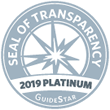
CLINICAL THYROIDOLOGY FOR PATIENTS
A publication of the American Thyroid Association
Summaries for Patients from Clinical Thyroidology (from recent articles in Clinical Thyroidology)
Table of Contents | PDF File for Saving and Printing
THYROID NODULES
Should thyroid scans still be used in investigating thyroid nodules?
ABBREVIATIONS & DEFINITIONS
Goiter: a thyroid gland that is enlarged for any reason is called a goiter. A goiter can be seen when the thyroid is overactive, underactive or functioning normally. If there are nodules in the goiter it is called a nodular goiter; if there is more than one nodule it is called a multinodular goiter.
Thyroid nodule: an abnormal growth of thyroid cells that forms a lump within the thyroid. While most thyroid nodules are non-cancerous (Benign), ~5% are cancerous.
Thyroid scan: this imaging test uses a small amount of a radioactive substance, usually radioactive iodine, to obtain a picture of the thyroid gland. A “cold” nodule means that the nodule is not functioning normally. A patient with a “cold” nodule should have a fine needle aspiration biopsy of the nodule. A “functioning” or “hot” nodule means that the nodule is taking up radioactive iodine to a degree that is either similar to or greater than the uptake of normal cells. The likelihood of cancer in these nodules is very low and a biopsy is often not needed.
TSH: thyroid stimulating hormone – produced by the pituitary gland that regulates thyroid function; also the best screening test to determine if the thyroid is functioning normally.
Thyroid Ultrasound: a common imaging test used to evaluate the structure of the thyroid gland. Ultrasound uses soundwaves to create a picture of the structure of the thyroid gland and accurately identify and characterize nodules within the thyroid. Ultrasound is also frequently used to guide the needle into a nodule during a thyroid nodule biopsy.
Thyroid fine needle aspiration biopsy (FNAB): a simple procedure that is done in the doctor’s office to determine if a thyroid nodule is benign (non-cancerous) or cancer. The doctor uses a very thin needle to withdraw cells from the thyroid nodule. Patients usually return home or to work after the biopsy without any ill effects.
BACKGROUND
Thyroid nodules are very common, occurring in up to 50% of individuals. The concern with a thyroid nodule is the risk of cancer. Thyroid scans can be used to determine if a nodule is functioning. If nodules are shown to be functioning on a thyroid scan, then perhaps a thyroid nodule biopsy can be avoided. This is because the risk of cancer is extremely low in nodules functioning on their own (autonomous nodules). However, the current guidelines recommend using a thyroid scan to evaluate nodules only if the patient’s serum TSH is low or on the low normal range. In areas with iodine deficiency, thyroid nodules are more common, especially multiple nodules in a single thyroid gland (multinodular goiter). The goal of this study was to examine the role of thyroid scans in evaluating all nodules in a region of iodine deficiency.
THE FULL ARTICLE TITLE:
Graf D et al. Functional activity of autonomous adenoma in Germany. Dtsch Med Wochenschr 2012;137:2089-92.
SUMMARY OF THE STUDY
A total of 476 patients with thyroid nodules were investigated by ultrasound and thyroid scanning regardless of their TSH levels. A total of 100 patients were found to have a functioning thyroid nodule on thyroid scanning. Of these patients, 68 had a normal TSH, whereas 32 had a low/suppressed TSH. There was no correlation between serum TSH levels and scan findings of a functioning nodule.
WHAT ARE THE IMPLICATIONS OF THIS STUDY?
In regions that have iodine deficiency, goiters are a frequent finding. Thyroid scanning will find autonomously functioning thyroid nodules in about 1/3 of cases. This is useful information because thyroid biopsy can be avoided in these cases. This also shows us that patients with a normal TSH who refuses a thyroid biopsy may benefit from a thyroid scan. This information may help avoid unnecessary thyroid biopsies in patients.
— Heather Hofflich, DO
ATA THYROID BROCHURE LINKS
Thyroid Function Tests: http://www.thyroid.org/blood-test-for-thyroid
Thyroid Nodules: http://www.thyroid.org/what-are-thyroid-nodules
Iodine Deficiency: http://www.thyroid.org/iodine-deficiency
Goiter: http://www.thyroid.org/what-is-a-goiter


